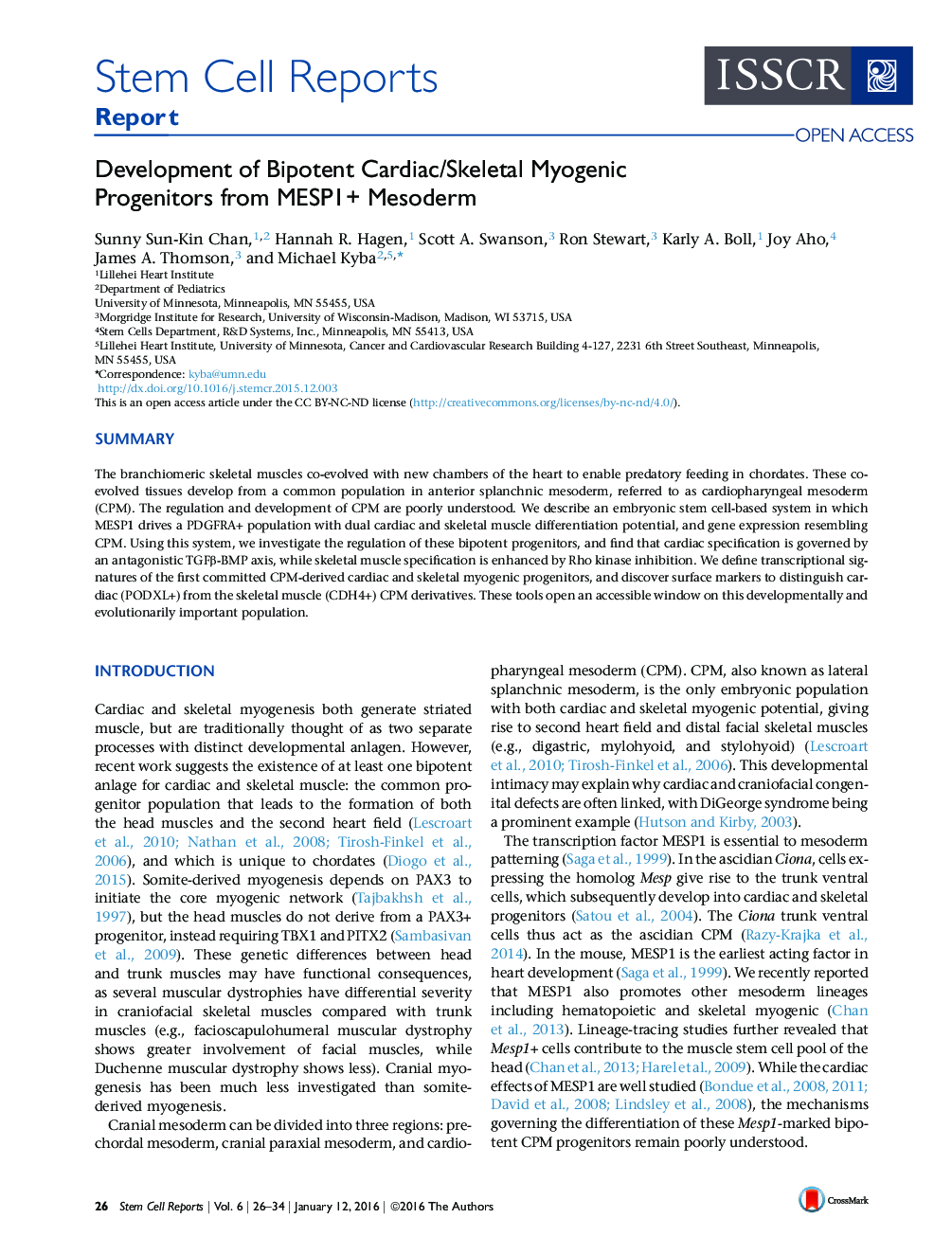| Article ID | Journal | Published Year | Pages | File Type |
|---|---|---|---|---|
| 2093285 | Stem Cell Reports | 2016 | 9 Pages |
•MESP1 induces bipotent PDGFRA+ cardiac/skeletal myogenic progenitors•MESP1+ PDGFRA+ cells functionally resemble cardiopharyngeal mesoderm (CPM)•TGFβ-BMP and Rho kinase signaling regulate CPM lineage choice•PODXL and CDH4 mark early cardiac and skeletal myogenic-committed progenitors
SummaryThe branchiomeric skeletal muscles co-evolved with new chambers of the heart to enable predatory feeding in chordates. These co-evolved tissues develop from a common population in anterior splanchnic mesoderm, referred to as cardiopharyngeal mesoderm (CPM). The regulation and development of CPM are poorly understood. We describe an embryonic stem cell-based system in which MESP1 drives a PDGFRA+ population with dual cardiac and skeletal muscle differentiation potential, and gene expression resembling CPM. Using this system, we investigate the regulation of these bipotent progenitors, and find that cardiac specification is governed by an antagonistic TGFβ-BMP axis, while skeletal muscle specification is enhanced by Rho kinase inhibition. We define transcriptional signatures of the first committed CPM-derived cardiac and skeletal myogenic progenitors, and discover surface markers to distinguish cardiac (PODXL+) from the skeletal muscle (CDH4+) CPM derivatives. These tools open an accessible window on this developmentally and evolutionarily important population.
Graphical AbstractFigure optionsDownload full-size imageDownload as PowerPoint slide
